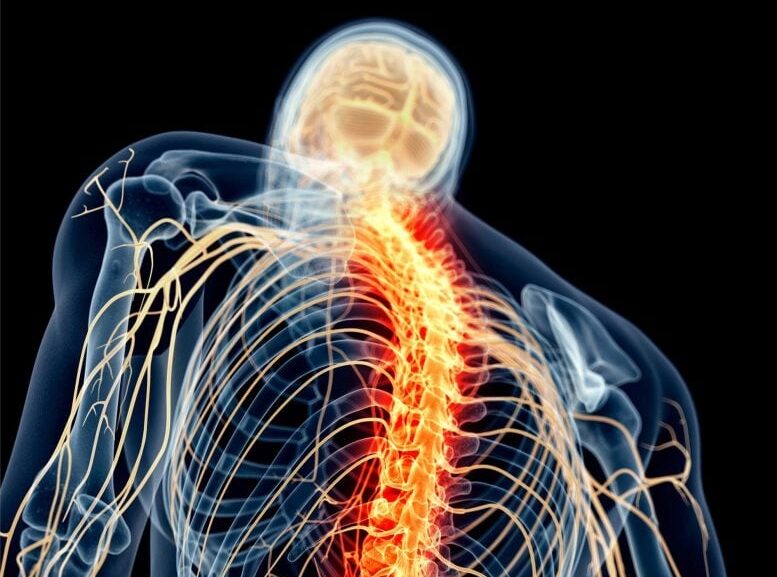Research in mice has identified a drug combination that may slow or even reverse damage to the spine.
In a preclinical study conducted by researchers at McGill University, two drugs targeting so-called “zombie cells” have been shown to address the underlying cause of chronic low back pain, a condition that affects millions of people worldwide.
Unlike current treatments, which focus on symptom relief through pain medications or surgery, these new drugs aim to eliminate the root cause of the pain.
“Our findings are exciting because it suggests we might be able to treat back pain in a completely new way, by removing the cells driving the problem, not just masking the pain,” said senior author Lisbet Haglund, a Professor in McGill’s Department of Surgery and Co-director of the Orthopaedic Research Laboratory at the Montreal General Hospital (MUHC).
The work was conducted by McGill’s Alan Edwards Centre for Research on Pain at the Montreal General Hospital, part of the MUHC.
Treating pain at the source
Senescent cells, often called zombie cells, build up in the spinal discs as people age or when discs are damaged. Instead of dying off like normal cells, these aging cells linger and cause inflammation, pain, and damage to the spine.
To explore a potential solution, the research team administered two drugs orally to mice: o-Vanillin, a natural compound, and RG-7112, an FDA-approved cancer drug. They were administered together as well as separately. They found the drugs could clear zombie cells from the spine, reduce pain and inflammation, and slow or even reverse damage to spinal discs after eight weeks of treatment. Each of the drugs had a beneficial effect, but the impact was greatest when they were administered together.
“We were surprised that an oral treatment could reach the spinal discs, which are hard to access and present a major hurdle in treating back pain,” said Haglund. “The big question now is whether these drugs can have the same effect in humans.”
A natural compound’s surprising potential
Notably, o-Vanillin wasn’t originally intended to be part of the study and was included almost by chance. Haglund explained that while testing other drugs, her team decided to add the compound, derived from turmeric and known for its anti-inflammatory properties, to see whether it might be effective in this situation.
The results offer some of the first evidence that o-Vanillin can clear out zombie cells. Analogs of RG-7112 are known to do this in osteoarthritis and cancer research, but had not been used to treat back pain.
Looking ahead, Haglund’s team will work to improve o-Vanillin’s structure to help it stay in the body longer to become even more effective. They believe these drugs have the potential to treat other age-related diseases driven by senescent cells, such as arthritis or osteoporosis.
Reference: “Senolytic treatment for low back pain” by Matthew Mannarino, Hosni Cherif, Saber Ghazizadeh, Oliver Wu Martinez, Kai Sheng, Elsa Cousineau, Seunghwan Lee, Magali Millecamps, Chan Gao, Alice Gilbert, Cedric Peirs, Reza Sharif Naeini, Jean A. Ouellet, Laura S. Stone and Lisbet Haglund, 14 March 2025, DOI: 10.1126/sciadv.adr1719
The study was funded by the Canadian Institutes of Health Research, The Arthritis Society, Le Réseau de Recherche en Santé Buccodentaire et Osseuse, and the Louise and Alan Edwards Foundation.

